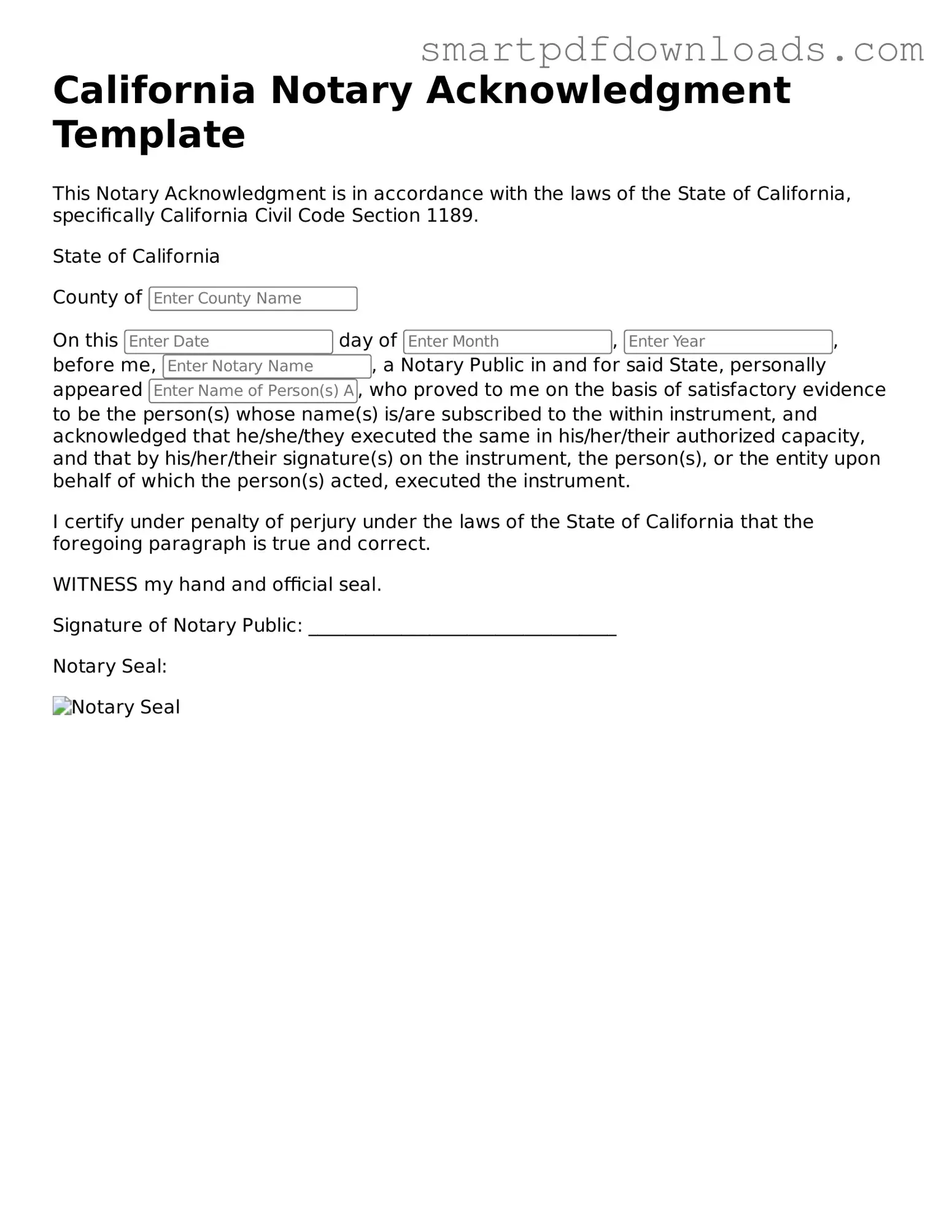Legal Notary Acknowledgement Form for the State of California
The California Notary Acknowledgement form is a crucial document used to verify the identity of individuals signing important legal documents. This form serves as a safeguard, ensuring that signatures are authentic and that the signers are acting willingly and knowingly. Understanding its purpose and proper use can help streamline various legal processes in California.
Edit Notary Acknowledgement Online

